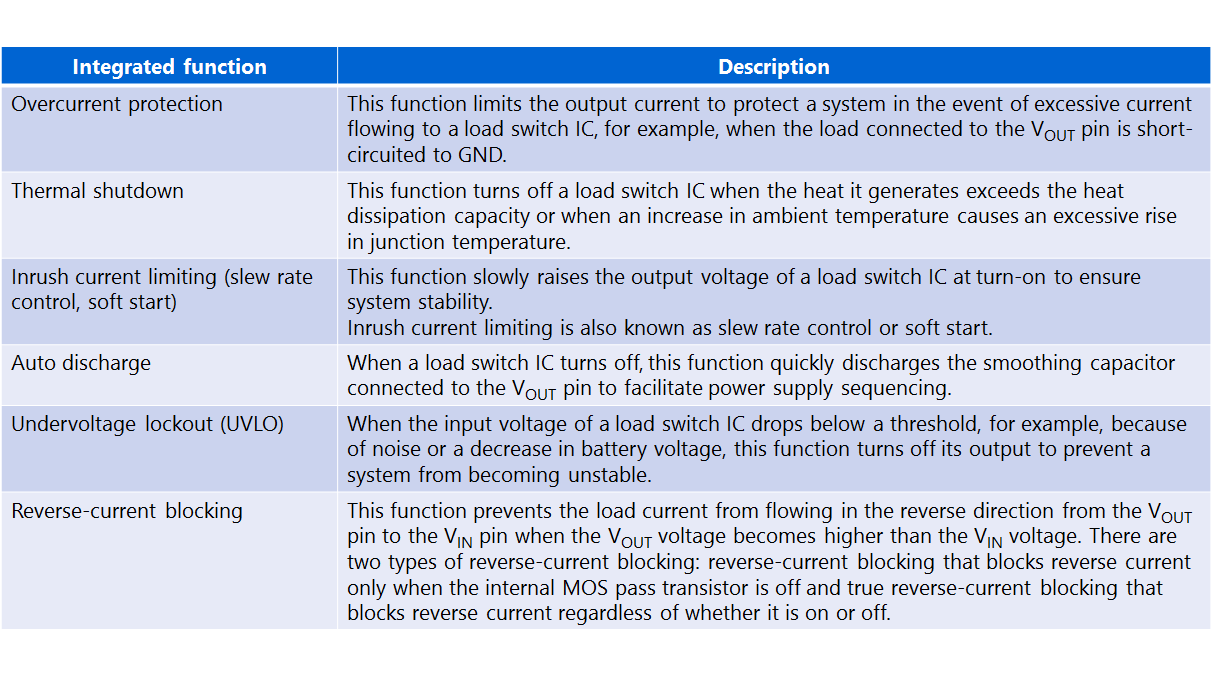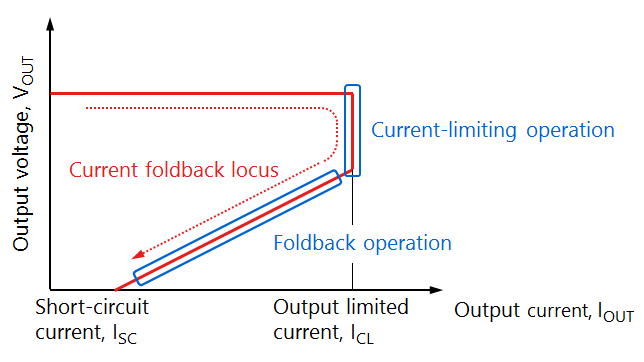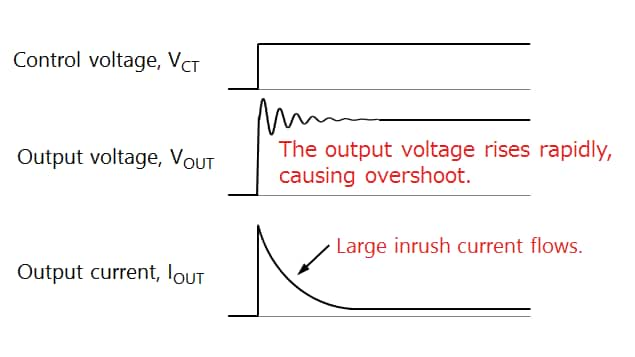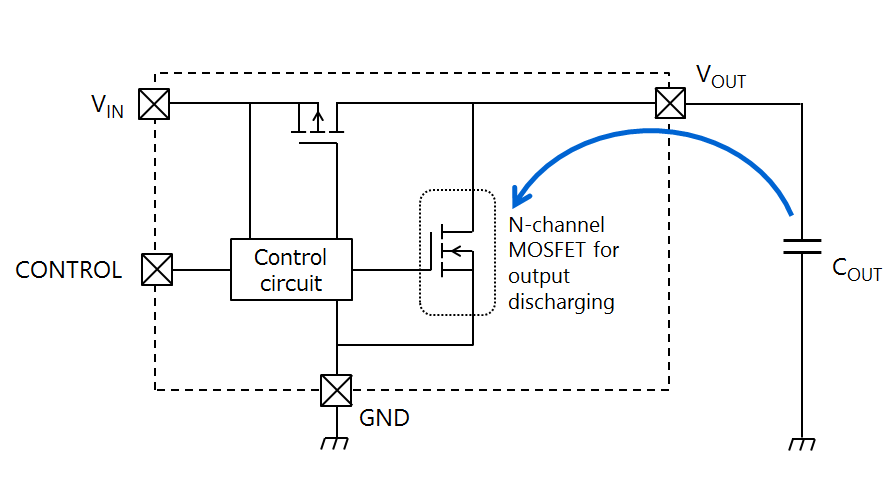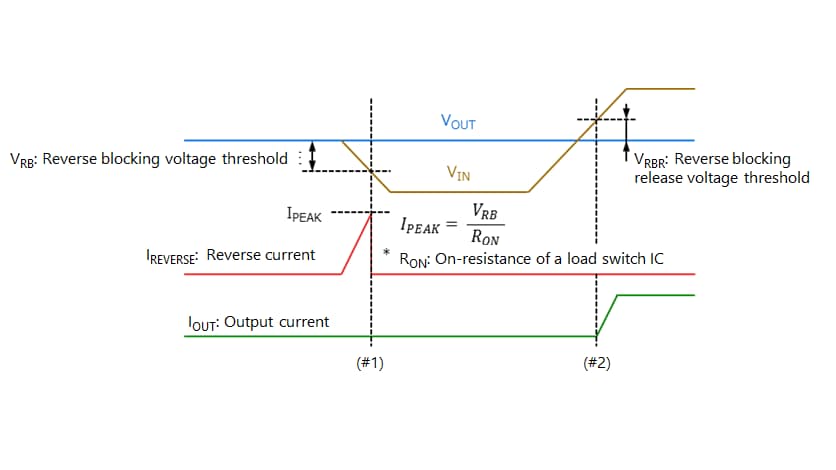- General Top
- SEMICONDUCTOR
- STORAGE
- COMPANY
-
My ToshibaSemicon
- Semiconductor Top
-
ApplicationsAutomotive
Body Electronics
xEV
In-Vehicle Infotainment
Advanced Driver-Assistance Systems (ADAS)
Chassis
IndustrialInfrastructure
BEMS/HEMS
Factory Automation
Commercial Equipment
Consumer/PersonalIoT Equipment
Healthcare
Wearable Device
Mobile
Computer Peripherals
-
ProductsAutomotive Devices
Discrete Semiconductor
Diodes
Transistors
Logic ICs
Analog Devices
Digital Devices
Wireless Devices
※
: Products list (parametric search)
Power SemiconductorsSiC Power Devices
※
: Products list (parametric search)
Isolators/Solid State RelaysPhotocouplers
Digital Isolators
Solid State Relays
Fiber Optic Transmitting Modules
※
: Products list (parametric search)
MOSFETsIGBTs/IEGTsBipolar Transistors※
: Products list (parametric search)
Diodes※
: Products list (parametric search)
MicrocontrollersMotor Driver ICsIntelligent Power ICs※
: Products list (parametric search)
Power Management ICsLinear ICs※
: Products list (parametric search)
General Purpose Logic ICsLinear Image SensorsOther Product ICsOther Product ICs
※
: Products list (parametric search)
-
Design & Development
-
Knowledge
- Where To Buy
- Part Number & Keyword Search
- Cross Reference Search
- Parametric Search
- Stock Check & Purchase
This webpage doesn't work with Internet Explorer. Please use the latest version of Google Chrome, Microsoft Edge, Mozilla Firefox or Safari.
require 3 characters or more. Search for multiple part numbers fromhere.
The information presented in this cross reference is based on TOSHIBA's selection criteria and should be treated as a suggestion only. Please carefully review the latest versions of all relevant information on the TOSHIBA products, including without limitation data sheets and validate all operating parameters of the TOSHIBA products to ensure that the suggested TOSHIBA products are truly compatible with your design and application.Please note that this cross reference is based on TOSHIBA's estimate of compatibility with other manufacturers' products, based on other manufacturers' published data, at the time the data was collected.TOSHIBA is not responsible for any incorrect or incomplete information. Information is subject to change at any time without notice.
require 3 characters or more.
2-3. Operation of thermal shutdown
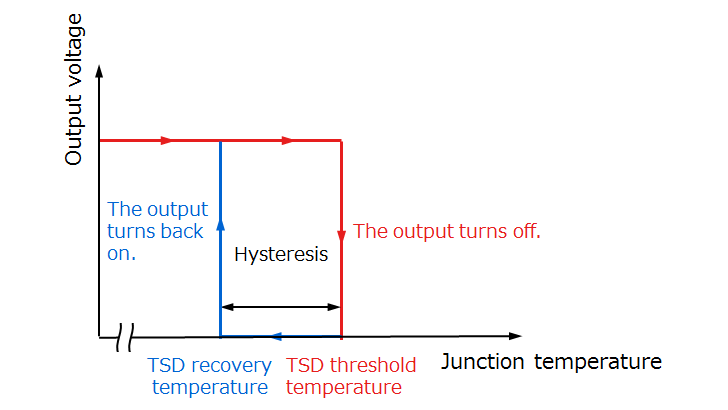
In the event of excessive power dissipation or the junction temperature exceeding a threshold due to an excessive increase in ambient temperature, the thermal shutdown (TSD) function turns off a load switch IC to protect itself and the system in which it is used.
Load switch ICs have a thermal shutdown temperature and a recovery temperature. The thermal shutdown temperature is the temperature at which TSD is tripped to turn off a load switch IC. When TSD is tripped, the resulting reduction in power dissipation causes its junction temperature to fall. Once it reaches a certain temperature, the load switch IC turns back on automatically. This temperature is the recovery temperature.
Unless the cause of the tripping of TSD is removed, the junction temperature rises back up, causing a load switch IC to enter the following loop: a turn-off of a load switch IC → a decrease in junction temperature → a turn-on of the load switch IC → an increase in junction temperature. The load switch IC should not be left at an excessive temperature for an extended period because doing so might affect the system stability or degrade the reliability of the load switch IC. Be sure to provide a fail-safe mechanism for a system in case of thermal shutdown.
The following link also provides a description of thermal shutdown:
Application note: Basics of Load Switch ICs
Chapter2 Convenient functions load switch ICs
Related information
- Products
Load Switch ICs - Applidcation Notes
Application Notes - FAQs
Load Switch ICs - Parametric Search
Parametric search - Stock Check & Purchase
Stock Check & Purchase


